Portugal’s second city, Porto, is an increasingly popular destination among digital nomads and other remote workers. I’ve spent quite a bit of time in this vibrant, artsy city over the last few years and I can confidently say that it’s an amazing place to live and work remotely.
In this comprehensive guide to living in Porto, I’ll share everything you need to know about living in this unique and fun-loving city.
I love spending time in Porto. It feels far less polished than Lisbon and has a more casual, hipster, and creative vibe. If you’re considering making Porto your next home base, this post is for you.
Read on for a full lowdown of the best neighborhoods, how to find accommodation, the best cafes and coworking spaces, money-saving tips, things to do in your free time, the pros and cons of living here, information on digital nomad visas, and more.
About Porto, Portugal
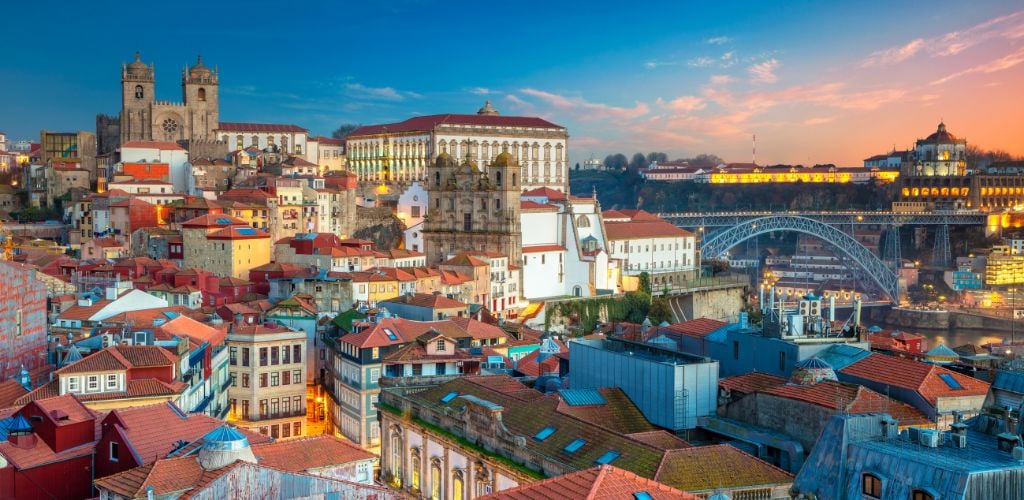
Porto is a major city on the Atlantic coast in the north of Portugal. With a population of around 1.3 million, it’s the second-largest city in the country. It’s an ideal base for exploring other parts of Portugal (one of my favorite countries in Europe) and neighboring Spain.
Porto is known for its historic center, a UNESCO World Heritage Site with a maze of atmospheric backstreets and centuries-old buildings. The city is also famous for its beautiful riverfront, its many ornate bridges, and (of course) top-quality port wine.
Porto has all of the amenities and convenience of a big city but with a friendly small-town atmosphere and a relatively low cost of living, making it ideal for digital nomads. The city is made up of many different neighborhoods, each with a unique vibe, as I’ll discuss in more detail below.
Digital Nomad in Porto: Personal Experience
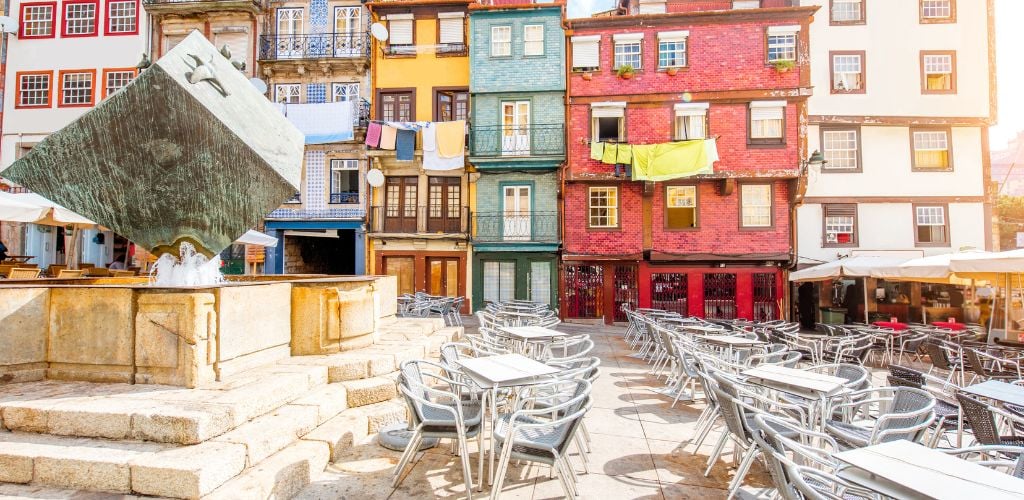
Last year, I lived in a tiny village in the mountains just outside of Porto. During this time, I spent quite a lot of my stay in the city. I’ve also visited Porto several times on other occasions over the last few years.
It has a particularly unique atmosphere that manages to blend cobbled medieval streets and old-world charm with a modern, creative energy. I love how informal it is, too. In my experience, people don’t usually bother to dress up much to go out here, which suits me perfectly!
I found it incredibly inspiring being a digital nomad in Porto. You’ll find a diverse range of people from all around the world living and working here. And, the digital nomads I met here were, on the whole, friendlier than in many other places I’ve traveled to.
Practically, the city is well set up for remote workers. There are plenty of coworking spaces and laptop-friendly cafes, internet speeds are good, and the cost of living is relatively low. I’ll go into more detail on each of these in the below sections.
Is Porto Safe?

Porto, like the rest of Portugal, is overall a very safe place to visit and live. The crime rate in Porto is far lower than in cities like New York or London, so you don’t need to be overly concerned about safety here.
While petty crimes like pickpocketing can and do occur, especially in crowded spots, levels of violent crime are relatively low. I’ve never once felt unsafe in Porto, during the day or the night, and my partner would happily walk by herself at night in most areas of the city without concern.
Of course, as with any other large city, it’s always a good idea to exercise common sense and be aware of your surroundings, especially at night.
The usual rules apply. Be mindful when carrying around any expensive-looking gadgets and jewelry, try to avoid poorly lit areas at night, and keep a watchful eye on your belongings at all times.
Best Areas to Live in Porto

There are many wonderful neighborhoods in Porto, each with a distinctive vibe and plenty of hidden corners. It’s a fantastic place to live and explore – every time I visit I discover somewhere new that I like.
Here are some of my favorite areas of the city. Each of these would make an ideal place to live in Porto as a digital nomad.
1. Ribeira
Ribeira, with its cobbled streets and riverside charm, is the historical heart of Porto. It’s brimming with character and is a great place to base yourself if you want to be close to all the action.
Ribeira is vibrant and beautiful, packed full of hidden courtyards, quaint restaurants, cafes, and bars. A Tasquinha Dos Guindais is one of my favorite little eateries tucked away on the steps leading down to the river. It’s wonderfully informal and chaotic, and their barbequed sardines are incredible.
You’ll bump into many other digital nomads in Ribeira, although the main downside is that it can get fairly crowded with tourists during the peak summer months (especially July and August). It’s still great though, and there are so many hidden corners it’s easy to find a secluded spot.
2. Baixa
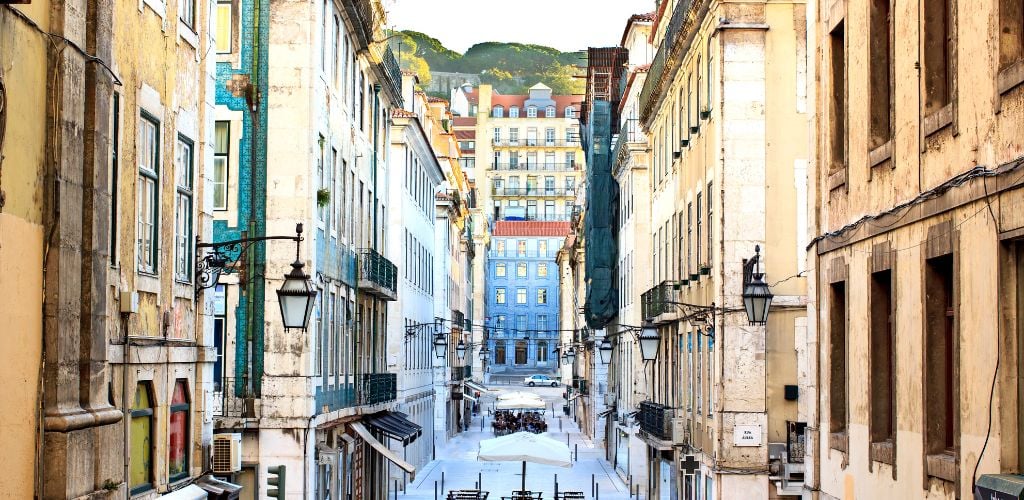
Just north of Ribeira, Baixa is the downtown of Porto and the bustling commercial hub of the city. Encompassing the area around Praça da Liberdade, and São Bento Station, Baixa is ideal for digital nomads who thrive in a lively environment.
The area has several excellent coworking spaces and tons of cafes, bars, shops, and cultural landmarks so you’ll never struggle to find somewhere to work or relax and have fun.
Accommodation options are diverse and plentiful in Baixa. Plus, its central location makes it easy to explore other parts of the city.
3. Bonfim
Bonfim is Porto’s trendy, up-and-coming hipster neighborhood. It’s a quieter, more residential area, making it perfect for those who prefer a peaceful work environment.
In true hipster fashion, the streets are lined with quirky cafes and vintage shops and many of the once-run-down buildings have been converted into creative spaces and studios for the area’s thriving creative community.
The accommodation options in Bonfim tend to be more affordable too, making it an attractive choice for digital nomads on a budget.
4. Vila Nova de Gaia

Just across the Douro River, Vila Nova de Gaia is best known for its port wine cellars. It’s quieter than central Porto, yet still accessible, and offers affordable living with spectacular views of the river, the bridges, and across to the old town.
Other than the areas immediately around the famous port warehouses, this area is pretty non-touristy, making it a great option if you’re looking to immerse yourself in authentic local life.
Accommodation also tends to be relatively affordable here too. To get to the city center, you can walk (or take the tram) across the spectacular and iconic double-decker Dom Luís I Bridge – not a bad commute, all things considered!
5. Foz do Douro
If you prefer a more laid-back, beachy vibe, Foz do Douro is the perfect neighborhood for you. Located on the western edge of Porto, this upscale area boasts beautiful beaches and stunning views of the Atlantic Ocean.
You can expect to pay more for accommodation here than in most other areas in Porto. However, the tranquility and west-facing ocean views make this an extremely desirable place to live.
If I could afford to buy a house in Foz do Douro, I would do it in a heartbeat. It has the atmosphere and charm of a small seaside town, but the amenities and convenience of a large city. You can go surfing on your lunch break, and watch the sunset over the sea every evening.
How to Find Accommodation in Porto

Finding the right spot in Porto can feel like a daunting task, but there are a few platforms that can help make the search easier. Here are some of the main ways I recommend to help you find somewhere good to live.
- Airbnb: Airbnb is a convenient option for short and medium-term stays. You can find everything from budget-friendly rooms to luxury apartments. For longer stays, some hosts offer discounts, although I’ve found that negotiating with people directly can often result in an even better deal.
- Facebook Groups: Joining local Facebook groups (like Porto Expats) can connect you directly with landlords and other people looking for tenants or housemates. This is one of my favorite ways to find cheap accommodation as it cuts out the middleman. However, it’s important to do your diligence (ideally visit the place and meet the people in person) before committing to anything.
- Rental Agencies: If you’re planning to be around for a while, you could always visit a traditional rental agency or estate agent. There are loads of these dotted throughout the city. Bear in mind that most agencies charge fees, and you might be asked for proof that you have the right to live and work in Portugal (e.g. an EU passport, or a digital nomad visa – see below).
- Walking Around Door-to-Door: This is another great way to find cheap long-term accommodation, although it does require a bit more effort. I recommend booking a week-long Airbnb first and using that time to explore a few different neighborhoods, looking out for signs advertising properties to rent (alugar, in Portuguese). Of course, you need to do your diligence too.
Cost of Living in Porto, Portugal

Porto is notably more affordable than many Western European cities. Your money will go much further here than in places like London, Paris, or Rome.
Of course, the exact costs for a digital nomad living in Porto, Portugal will vary from person to person according to individual lifestyle and preferences. However, I’ve given a few indications below of what an average person might expect to spend living here.
Restaurants and Groceries
It’s easy enough to eat out in a casual restaurant for less than €10 per person, excluding drinks. A three-course meal for two in a mid-range restaurant usually costs around €40 including a couple of beers or a bottle of house wine.
For a quick lunch on the go, you can typically grab a freshly made sandwich from a local bakery for €5. Of course, if you want to push the boat out, it’s easy to spend upwards of €50 per person eating in a fancy restaurant. But generally, eating out in Porto doesn’t have to break the bank.
For everyday items, a cup of coffee typically costs around €1-€2, a local beer is about €1-€2.50, and a glass of good Portuguese wine can be found for around €2-€4.
Basic groceries are reasonably priced here too, especially in the supermarkets where you can pick up a loaf of fresh bread for €1 and a mid-range bottle of wine for €6.
Accommodation Costs
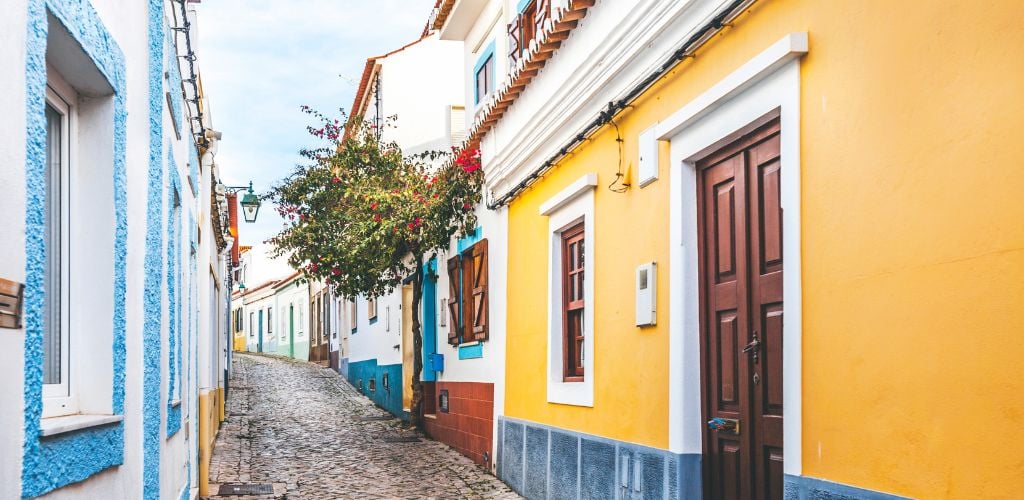
As you’d expect, the cost of accommodation in Porto varies quite a bit depending on location, size, and spec.
On average, renting a one-bedroom apartment in the city center costs around €900 per month. If you don’t mind being a bit further out, that price can drop to €700 or even lower.
Of course, prices tend to fluctuate based on proximity to popular areas, amenities, and the overall condition of the property. Utilities, including electricity, heating, cooling, water, and garbage, typically add an extra €100 per month, give or take.
Some (but not all) rental agreements include utilities and internet in the rent, so it’s important to check the terms carefully before you commit.
Transportation Costs in Porto, Portugal
Porto has an efficient public transport network, including buses, trams, and a metro. A single metro or bus ticket costs around €1.85 and a monthly unlimited pass costs €40.
Taxis and ride-sharing services like Uber are widely available and relatively inexpensive compared to cities like London and Paris. In my experience, a typical Uber ride within the city usually costs between €5 and €10.
Walking is also a practical option for getting around, especially in the central districts. Porto’s compact size and scenic streets make it a very pedestrian-friendly city.
SIM Cards and Data

Purchasing a local Portuguese SIM card (or eSIM) is cheap and relatively straightforward. Portugal’s main cellular providers include Vodafone, MEO, and NOS, all of which offer a variety of plans, including pay-as-you-go options.
You can buy an unlimited data plan with speeds of up to 1 Gbps from NOS for €35 for 30 days. If you don’t need a huge amount of data (and/or if you sign up for a longer period), it’s cheaper.
To purchase a SIM card, head to one of the many mobile phone shops that are dotted around the city, or buy one from the airport. You’ll need to show a valid form of identification, such as a passport.
Money Saving Tips for Porto, Portugal
Having a good quality of life in Porto costs less than in many other large Western European cities. However, there are some tips to stretch your budget even further:
- Visit Off-Season: Avoiding the summer months can save you money on accommodation and flights.
- Book in Advance: Planning ahead can help you snag discounted rates on long-term rentals and transport.
- Shop Local: Local markets offer fresh produce at lower prices than supermarkets.
- Buy a Porto Card: Investing in a Porto Card gives you discounts on transport, museum entries, and even some restaurants.
- Take Advantage of Free Activities: From exploring the city’s parks and gardens to visiting free museums, or even lounging on the beach, there are plenty of great activities here that won’t cost you a penny.
- Use Public Transport: Walking is great for short distances, but public transport is cheap and efficient for longer trips around the city.
- Self-Cater: Renting an apartment with a decent kitchen enables you to cook meals for yourself and avoid having to spend money on eating out all the time.
- Happy Hours: Take advantage of happy hour deals at bars and restaurants for cheap drinks and food.
Coworking Spaces in Porto and WiFi Speed

Working remotely in Porto is a breeze. WiFi in Porto is generally fast and reliable, with typical download speeds of around 180 Mbps and upload speeds of 95 Mbps.
The city has a great range of coworking spaces offering modern facilities, comfortable workstations, and excellent networking opportunities. Here are a few of my favorite options:
1. Porto i/o Riverside (Ribeira)
Porto i/o Riverside is one of my favorite coworking spaces in Porto. It’s located in the historic Ribeira district, inside a converted 16th-century townhouse.
This enviable location offers stunning views of the river, the famous bridges, and the old town. It’s also easily accessible from most parts of the city and is within easy walking distance of Porto’s central train station.
This coworking space offers day passes (many in Porto don’t), which cost €20, so you can try it out without needing to commit to a membership. They also offer a 5-day pass for €70, or a 10-day pass for €135. A monthly membership costs €150 and grants you access 24/7.
2. Work Wise Co-Working & Offices (Bolhão)
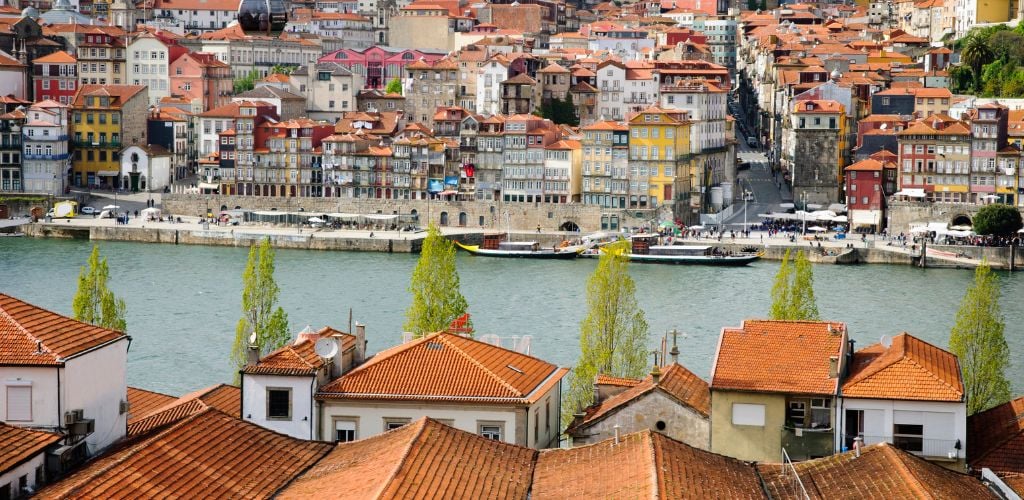
Work Wise Co-Working & Offices has a great range of amenities and open-plan workspaces spread across its two floors. I love the sunny rooftop terrace here where you can enjoy amazing views of Porto.
They have state-of-the-art meeting rooms, ergonomic office chairs, standing desks, personal storage lockers, and a kitchen with free tea and coffee. The space is easy and convenient to reach via public transport with Trindade metro station only a short walk away.
You can get a monthly hotdesking membership from €89 per month, which I think is excellent value for money. If you’d rather rent a private office, these start from €600 per month.
3. PortoSoul Cowork (Ribeira)
PortoSoul Coworking is another excellent coworking space housed inside a beautiful historic building in the Ribeira district. It offers some of the fastest WiFi in the city (up to 400 Mbps) and a range of comfortable, flexible workspaces.
I really like the fact that each desk comes equipped with a decent amount of physical storage. Monthly members also get 1,000 free prints per month and access to 10 GB of private cloud storage.
Additional perks include standing desks, a comfy lounge/chill-out area, and a kitchenette with a coffee machine and free coffee. You can get a day pass for €12.50, weekly access for €50, or a monthly membership for €100.
Best Cafes to Work From in Porto

If coworking spaces aren’t really your jam, Porto has many laptop-friendly cafes that you can work from. Just be sure to buy something every hour or two – don’t be that person who nurses a single coffee all day just to take advantage of the free WiFi…
Here are some top cafes in Porto that are great for getting through a few hours of work:
- FÁBRICA Coffee Roasters: Amazing coffee roasted on-site and a calm atmosphere that’s conducive to concentration. I love the decor here too.
- Combi Coffee: Another excellent spot for coffee lovers and remote workers. The vibe is relaxed, the chairs are comfy, and the WiFi is reliable.
- C’alma Coffee Room: This place is cool too, offering plenty of seating, a blend of modern and vintage decor, and a tasty selection of pastries, sandwiches, and salads.
Activities and Things To Do in Porto
Living in Porto is fun! There are so many great things to do here when you’re not working, whatever your interests. Here are a few suggestions:
1. Port Tasting in Vila Nova de Gaia

Port wine has been aged and exported from Porto (and the neighborhood of Vila Nova de Gaia in particular) for centuries. The stuff is called “port” for a reason!
After a long day of working, head over to Gaia where you can take a tour of the historic port warehouses and taste some of the city’s most famous fortified wines.
Most tours include a guided tasting and an informative tour of the cellars. Click here to book.
2. Chill on the Beach
Once the weekend comes around – or, if you have your own online business, any day you feel like it – I highly recommend spending a day relaxing at Matosinhos Beach.
It’s an easy metro ride from the city center, and the beach is lined with restaurants and cafes where you can enjoy fresh seafood along with a glass or two of local wine.
Or, why not bring your laptop for a change of scenery and get some work done while enjoying those sweet ocean views?
3. Go Surfing

If you’re a surfer, there are several fantastic breaks located a short distance from Porto. If you’re disciplined enough (I’m not), you can even fit in a cheeky surf before work!
Head to Matosinhos Beach, Foz do Douro, or Espinho for some excellent waves and a laid-back surf scene. There are waves for all levels, from mellow beach breaks for beginners to challenging reefs for intermediate and advanced surfers.
There are plenty of shops at each of the above spots where you can rent boards. Plus, many surfing schools offer lessons for all levels. Click here to learn more.
4. Take a Food Tour
At the weekend, or during any other free time, experience Porto’s culinary delights with a guided food tour.
You’ll visit local eateries and markets where you’ll have the opportunity to taste classic local dishes like francesinha (one of the most incredible sandwiches I’ve ever eaten), pastel de nata, grilled sardines, salted cod, and various other seafood delicacies.
Your guide will also teach you about the food culture and history of Porto, making it an extremely satisfying and enriching experience. Click here to book.
5. Join a Historical Walking Tour

If you want to learn more about Porto’s distinctive architecture, and rich history, culture, and traditions, consider taking a historical walking tour of the city.
These tours typically visit several of the city’s most iconic sites like Porto Cathedral, Avenida dos Aliados, Livraria Lello, Clérigos Church, Rua Santa Catarina, Mercado do Bolhão and São Bento Railway Station, known for its mesmerizing Azulejo tiles.
This is a particularly well-reviewed walking tour of Porto. And if you’d rather not walk, check out this fun tuk-tuk tour of Porto instead!
Weather in Porto, Portugal
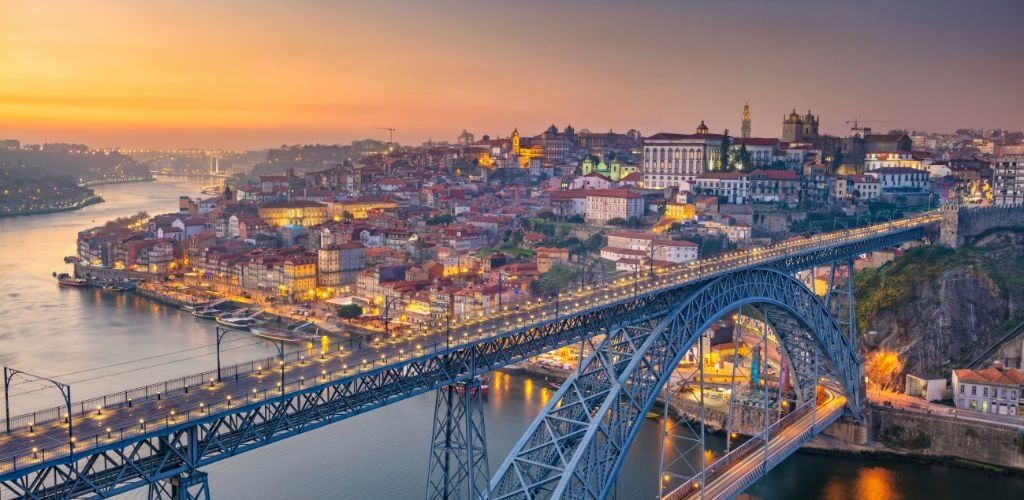
Porto has four distinct seasons, with warm, dry summers and cool, rainy winters. Due to its latitude and Atlantic coastal location, the city generally doesn’t experience any extreme weather; making it a year-round destination.
That said, I think the best time to visit Porto is from late spring to early autumn (May to September) when the weather is warmest and the days are longest. During this period, average maximum daytime temperatures range from 20°C to 25°C (68°F to 77°F).
The hottest months are usually July and August, although these are also the busiest and most expensive times to visit. Personally, my favorite month in Porto is September.
Pros and Cons of Living in Porto
As with anywhere in the world, there are both pros and cons of living in Porto. Some of these are the pros and cons of living in Portugal generally, while others are more specific to Porto itself.
Pros of Living in Porto, Portugal
- Affordable cost of living
- Vibrant cultural scene
- Friendly locals
- Great food and wine
- Beautiful architecture and historical sites
- Proximity to beaches and natural beauty
- Growing expat and Porto digital nomad community
- High-quality healthcare system
- Relatively safe city
- Compact and walkable, ideal for exploring on foot
- Mild winters compared to other European cities
- Increasingly diverse and international atmosphere
Cons of Living in Porto, Portugal
- Humid weather, particularly in summer
- The language barrier can pose challenges
- Public transportation can be crowded
- Limited direct flights from some international destinations
- Relatively high unemployment rates
- The bureaucracy can be slow and frustrating
- Winter months bring significant rainfall
- Limited job opportunities for non-Portuguese speakers
- Some areas are becoming gentrified, pushing up costs
- The summer months can be quite touristy
- Occasional issues with street cleanliness and maintenance
- The rental market can be competitive, particularly in central areas
Digital Nomad Visa for Porto

Portugal has recently launched a digital nomad visa allowing non-EU citizens to live and work in Portugal. This visa lasts for one year and can be renewed up to four times, providing you continue to meet the requirements.
For citizens of the United States, Canada, the UK, and other non-EU countries, there’s an income requirement of at least €3,040 per month. For the most accurate and up-to-date information regarding the application process, see this post and/or speak with an immigration specialist.
If you aren’t eligible for the digital nomad visa, citizens of many countries (including the U.S., Canada, UK, Australia, and New Zealand) can enter and stay in the EU (Portugal is an EU Member State) for up to 90 days every 180 days as per the Schengen zone regulations.
In Conclusion
Porto offers an enviable combination of culture, creativity, and cost-effectiveness. It’s a great place to live and work, whether for a short period or longer term.
I hope this digital nomad guide to Porto has been useful and informative. And if you’re still on the fence, just go for it – you’ll have a fantastic time there, I’m sure.
The post Digital Nomad Guide to Living in Porto, Portugal appeared first on Goats On The Road.

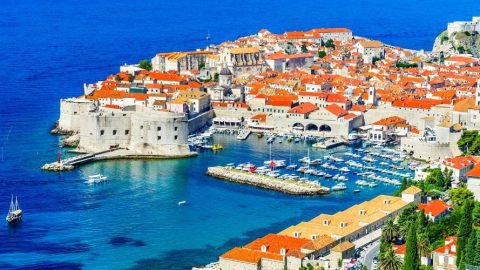


Recent Comments